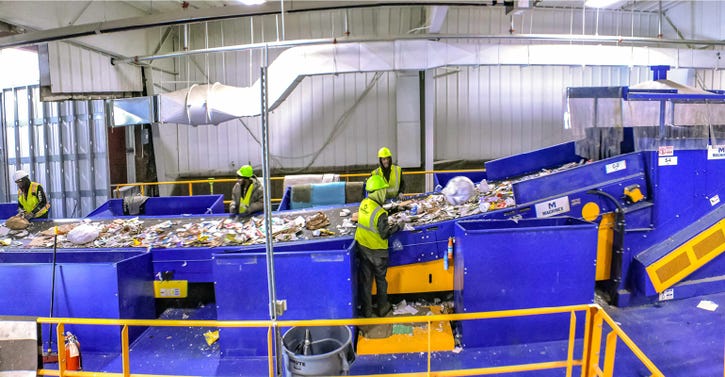An upcoming WasteExpo session will examine how MRFs are dealing with contamination, as well as projected changes needed for improvement.
China’s shutdown of 5 million tons of mixed paper imports has caused a ripple effect in the U.S. and beyond.
It has driven materials recovery facilities (MRFs) to secondary markets that don’t have capacity for this volume. It has resulted in depressed pricing, but at the same time, MRFs are needing to invest more to make cleaner bales due to increased quality demands. Vietnam, India and Indonesia are receiving a fair amount of these materials but expect cleaner bales, and as supply continues to outpace demand, some domestic markets have more rigid expectations, too.
“For us, there is much more of a risk factor with regard to rejection or downgrades,” says Bob Cappadona of Casella Recycling. Cappadona will speak on the challenges and what he foresees for domestic MRFs during a WasteExpo session titled “How MRF Operators are Affected by Stricter Standards in Fiber Markets.” Joining Cappadona are Tim Flanagan of Monterey Regional Waste Management District and Chris Hawn of Machinex.
The material keeps on coming daily, and MRFs can’t turn it on or off. Tip floors get inundated, but trying to push more through faster would create more problems.
Casella, whose recycling arm processes 800,000 tons a year, has made operational changes and capital investments to keep up while avoiding producing more than 2 percent prohibitives—materials that don’t belong in bales.

“We made processing adjustments to ensure we met that 2 percent threshold. We added sorters. We slowed down lines. And we ensured we are processing at the design throughput of the facility. If you process over the threshold, you push the limits of the separation technology and end up with plastic in fiber and fiber in plastic,” says Cappadona.
Casella’s processing costs have increased 20 to 30 percent, mainly due to fiber, as mixed paper and old corrugated containers (OCC) are about 65 to 70 percent of its stream.
But, says Cappadona, “We see good news on the horizon. We see capacity to handle mixed paper coming online. And I will talk about that at WasteExpo.”
Monterey Regional Waste Management District in California launched its $25 million MRF as China’s National Sword policy was being implemented.
“Anyone operating MRFs prior to National Sword was making paper grade mixes and plastic bales that were more tolerant of contamination. But when we entered the market, it was a whole new world. Our people had to meet new standards from day one,” says Tim Flanagan, general manager of Monterey Regional Waste Management District.
The operation is getting close to China’s accepted contamination level but is challenged to extract all brown materials (mainly OCC) from bales to make a more marketable mixed paper grade.

Jon Schroeder, general manager at Lakeshore Recycling Systems
“We have to interrogate mixed paper bales more closely. We are breaking and rerunning about 10 percent of them,” says Flannigan.
While the district is fairly current, Flannigan says, “We still recognize that to handle new market specs laid on us, we will need to make significant add-ons, such as automations and additional screens and separators. And these will be significant expenditures.”
Flannigan will elaborate at WasteExpo on what it was like to bring a MRF online as National Sword was being implemented. He will share lessons learned on speculated appropriate design specs versus what the new market has dictated. And he will touch on a “hyperfocus” on quality control.
Removing brown materials to make a more marketable product can be a multipronged approach, and each MRF goes about it differently based on its contamination issues, says Hawn, Machinex CEO.
“We can put out more OCC screens to take out more of this material. We can put in optical sorters to help minimize contamination. We can put in scalping screens and ballistics to address capacity issues,” he says.
What’s most important is that the system is balanced with the right volumes and types of materials going to the right destinations and rerouting what does not belong in a stream.
m
“A customer may be trying to run 15 tons an hour of news screen, so I’d look at their issue and may suggest scalping material [removing a small amount of a specific material to improve efficiency of the news screen] and perhaps sending that material to mixed paper screens. Then you relieve the burden on the first screen,” says Hawn.
The biggest trend he has seen to improve flow and efficiency is installation of optical sorters whereby material goes through the sorter after passing through fiber screens. It removes contamination thus minimizing requirement for additional manual sorters.
Hawn also thinks robotics may come into discussions for more MRFs.
“There are differing personal opinions on robotics’ role at this time or in the near future, but we will discuss this further at WasteExpo. And we will discuss screen design changes and technologies to improve both OCC recovery and fiber purity,” he notes.
About the Author(s)
You May Also Like




